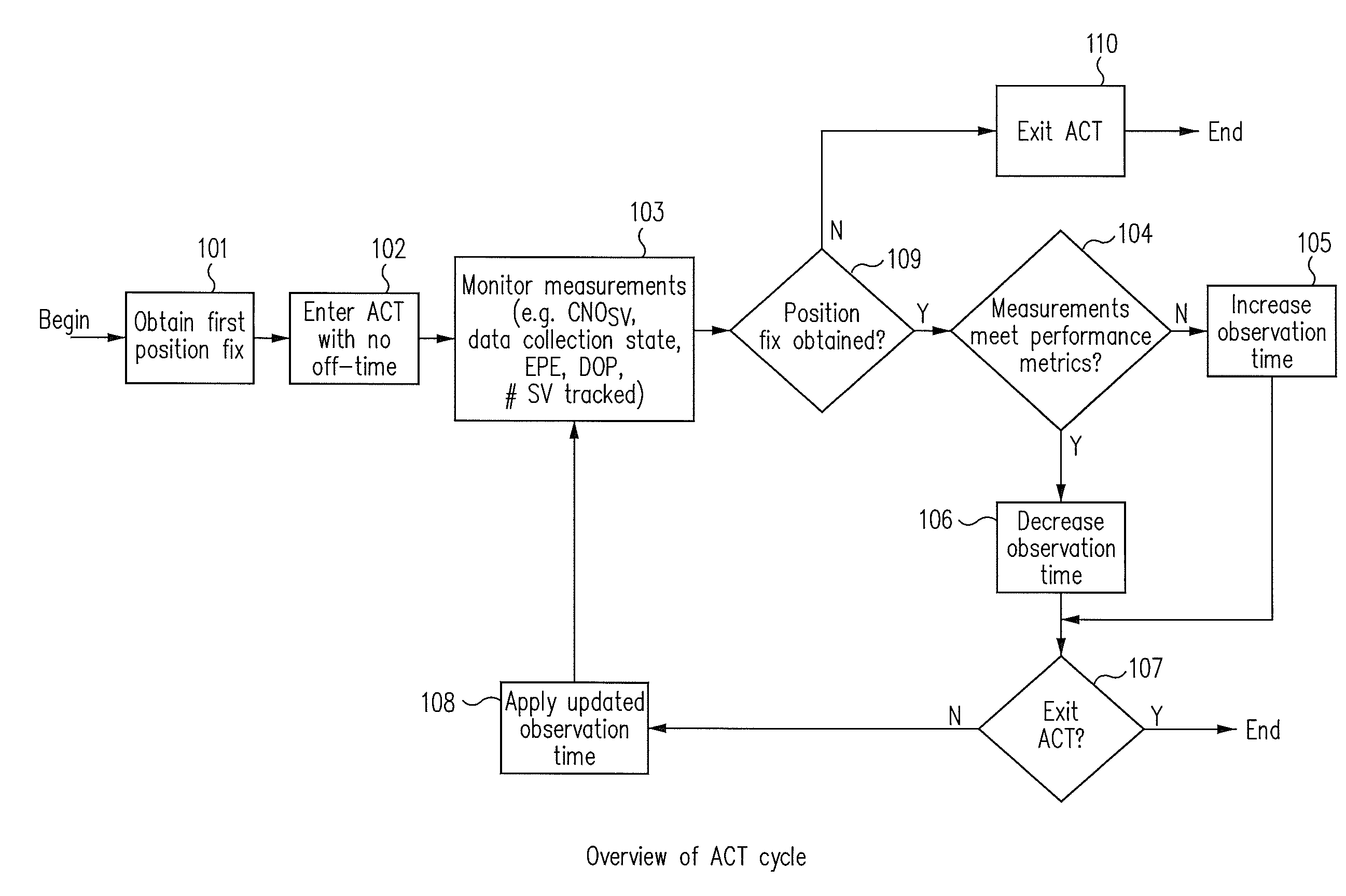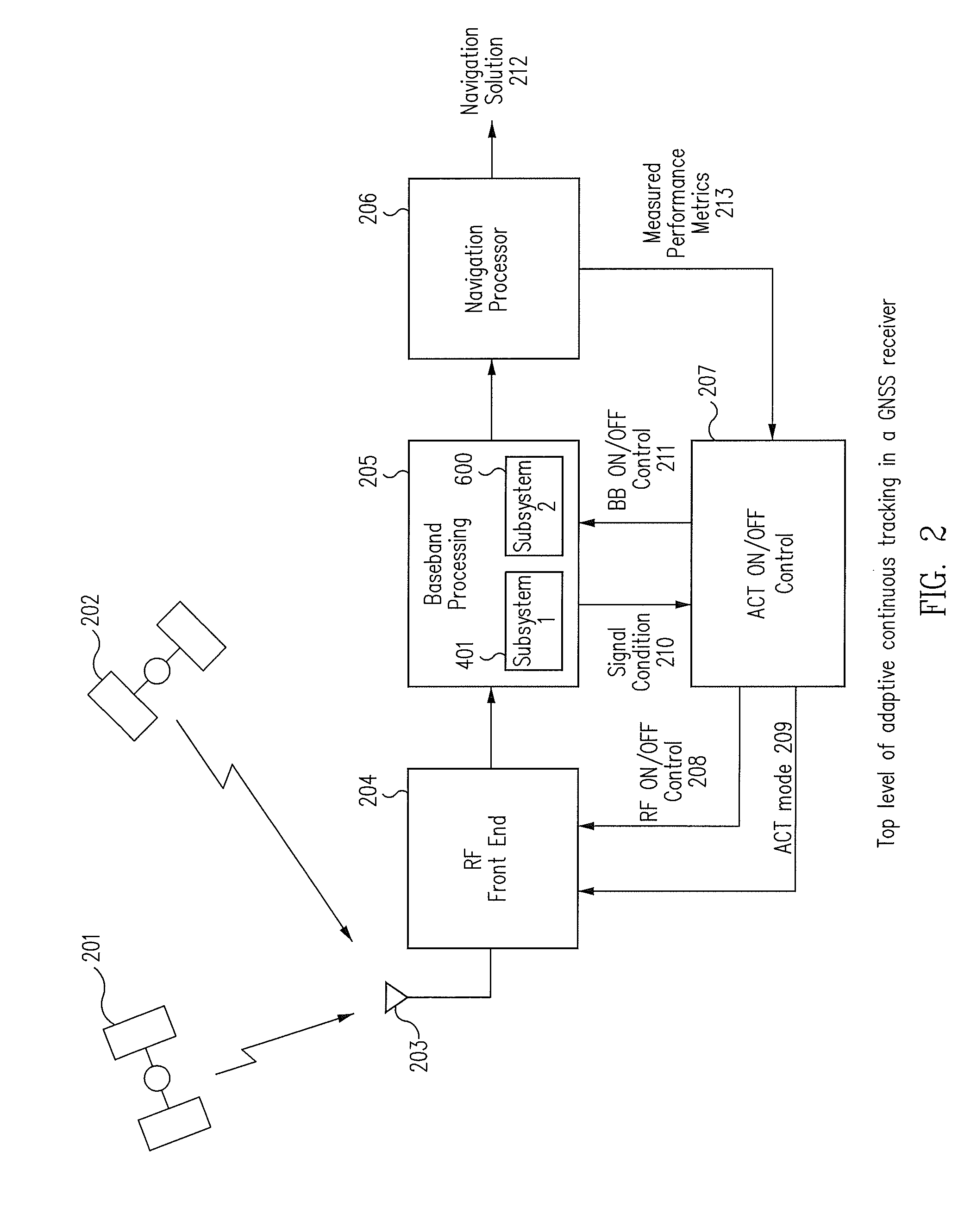Method and apparatus for reducing power consumption in GNSS receivers
a technology of global navigation satellite system and power consumption reduction, applied in satellite radio beaconing, measurement devices, instruments, etc., can solve the problems of longer observation time and more power consumption, and achieve the effects of reducing the power consumption of gnss receivers, longer observation time, and more reliable range measurements
- Summary
- Abstract
- Description
- Claims
- Application Information
AI Technical Summary
Benefits of technology
Problems solved by technology
Method used
Image
Examples
Embodiment Construction
[0015]Systems and methods are disclosed for using ACT to rapidly switch on / off the RF front-end and the baseband hardware of the GNSS receivers to reduce power consumption as a function of the desired performance metrics. ACT may be used when 1 Hz positioning fix operation is required and the receivers are operating in environments where the received CN0 of the satellites and the number of satellites needed in the navigation solution are more than the minimum. ACT adapts satellite observation time to the operating environment through rapidly switching on / off the RF front end and rapidly enabling / disabling the digital baseband processing to reduce power consumption while attempting to maintain the desired performance metrics. The desired performance metrics may be formed from a combination of the maximum position error allowed, the maximum HDOP allowed, requirements for data demodulation, the minimum satellite set, and the minimum CN0. ACT tunes the observation time such that the est...
PUM
 Login to View More
Login to View More Abstract
Description
Claims
Application Information
 Login to View More
Login to View More - R&D
- Intellectual Property
- Life Sciences
- Materials
- Tech Scout
- Unparalleled Data Quality
- Higher Quality Content
- 60% Fewer Hallucinations
Browse by: Latest US Patents, China's latest patents, Technical Efficacy Thesaurus, Application Domain, Technology Topic, Popular Technical Reports.
© 2025 PatSnap. All rights reserved.Legal|Privacy policy|Modern Slavery Act Transparency Statement|Sitemap|About US| Contact US: help@patsnap.com



